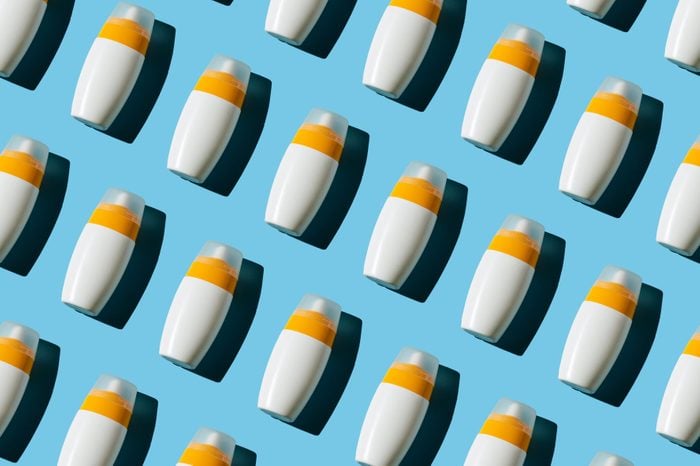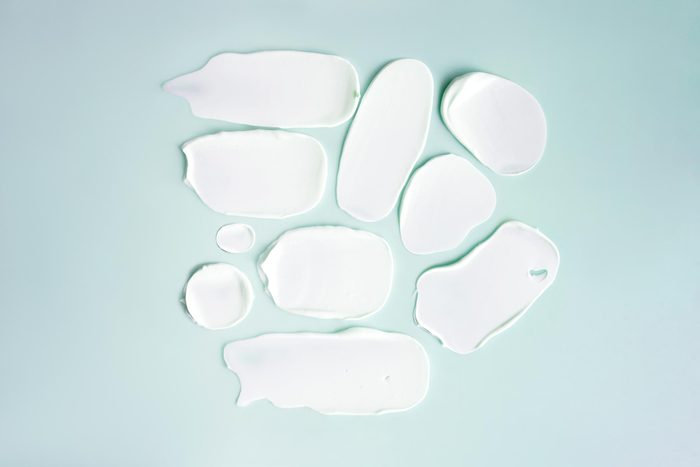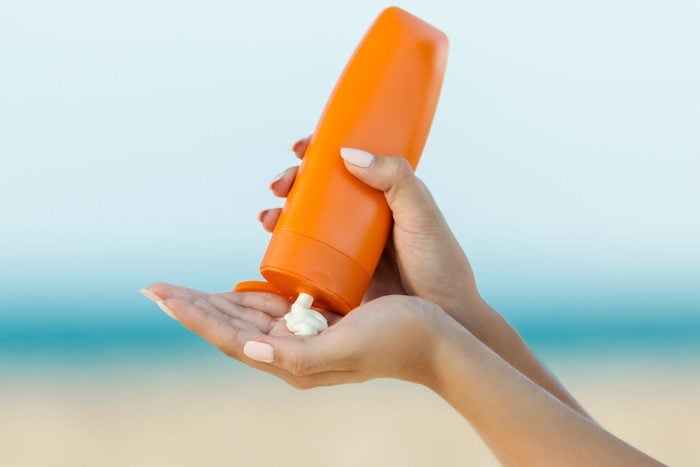
A 2021 study in the International Journal of Environmental Research and Public Health stated that social media has played a key role in helping to increase public awareness of skin cancer risk from sun exposure. And, according to spring 2022 data from the American Academy of Dermatology Association (AAD), wearing sunscreen is indeed a no-brainer for most Americans these days—which is major progress.
The AAD’s survey found that sun protection is a greater priority for people now compared to five years ago—but their research also revealed there are still plenty of misunderstandings when it comes to choosing which sunscreen is best for which person.

Which SPF do I need?
SPF stands for “sun protection factor”—but specifically, says Megan Rogge, MD, a board-certified dermatologist and assistant professor of dermatology at UTHealth Houston, SPF is a marker of protection against the sun’s UVB rays.
UVB rays are what cause our skin to tan and burn—and according to the American Cancer Society, they’re thought to cause most skin cancers. In theory, SPF protects your skin against UVB rays like this: If you’re someone who starts to burn after five minutes in the sun, using SPF 30 would protect you for 150 minutes (30 times five minutes).
However, this is “an old-school measurement,” Dr. Rogge explains. SPF is related to the amount of sun exposure you’re getting—and this doesn’t necessarily translate to time spent in the sun. Fair-skinned people absorb more of the sun’s rays, for instance, while factors like the time of day and geographic location also affect UV-ray strength.
Another misconception? The standard theory suggests choosing an SPF based on how long it takes you to burn…but depending on your skin type, you might not burn, or at least not easily. Even the “healthy”-looking tan that starts to develop is still skin damage—which significantly raises your risk of developing skin cancer.
What’s more, “sunscreen should be reapplied a minimum of every two hours,” Dr. Rogge says. “So technically, if you’re applying sunscreen perfectly, there is no difference between using an SPF of 30 or an SPF of 100.” That said, she explains that because most people don’t apply sunscreen properly—one ounce (the amount to fill a shot glass) on their exposed skin—those higher SPF numbers can provide additional protection in real-life scenarios.
So, if you’re headed to the beach (or have a fair skin tone), Dr. Rogge recommends taking SPF 50 with you for protection.
4 Unexpected Body Parts That Are Sunscreen Musts, Says Research

What is the best sunscreen?
A product’s SPF isn’t the only thing to consider when choosing a sunscreen. The sun also emits UVA rays, which are responsible for premature aging, wrinkles, and pigmentation, Dr. Rogge explains. (UVA rays can also penetrate glass, making sun protection still necessary if you’re working indoors near a window or driving in your car.) SPF does not block UVA rays, but “if a sunscreen is labeled broad-spectrum, it has adequate UVA protection,” Dr. Rogge says.
So what’s the best sunscreen? The US Food & Drug Administration (FDA) says that, in general, everyone should use a broad-spectrum sunscreen with an SPF of at least 15, reapplying every two hours. And if you have fair skin, the FDA recommends upping that SPF to between 30 and 50—in fact, SPF 50 is the FDA’s highest official recommendation.
The administration has actually proposed a requirement that sets the maximum SPF value for commercial sunscreens at SPF 60. This potential regulation aims to mitigate consumer confusion and suncare misconceptions—like the AAD finding that 67% of people believe SPF 30 sunscreen offers twice as much protection as SPF 15, and so SPF 100 would be twice as effective as SPF 50.
There are a few other SPF misconceptions the FDA wants to clear up:
-
There’s no such thing as a healthy “base tan.” A tan is still UV skin damage, and while the extra melanin provides some protection against burning, a tan has an SPF of about two to four.
-
Water-resistant sunscreen is recommended if you’re spending time at the pool or beach, but it needs to be reapplied every 40 minutes (as opposed to every 120 minutes).
-
A high percentage of skin cancer-causing rays can penetrate cloud cover—and sun rays can still be dangerous in the winter.

Who makes the safest sunscreen?
Concern over safe sunscreen ingredients has been a hot topic in recent years, too. But “there have never been any definitive studies that show wearing sunscreen is harmful to you in any way,” Dr. Rogge says. “It’s never been tied with any risks, malignancies, or other health problems.”
For example, she points to research investigating if chemicals in sunscreens may influence hormonal properties in the body. “But those chemicals would have to be at really, really high doses with high levels in the bloodstream, which they can’t get to with the way sunscreen is applied.”
Still, physical sunscreens (also called “mineral-based” or “inorganic” sunscreens) are just as effective—and, in some cases, have extra benefits. These formulas contain zinc oxide and titanium dioxide, Dr. Rogge says, which are generally less irritating to those with sensitive skin. And because you’re creating a physical barrier on your skin, mineral sunscreens offer broad-spectrum protection against both UVB and UVA rays. A physical sunscreen also protects your skin as soon as you apply it, compared to chemical-based sunscreens that take 15 minutes to absorb into your skin.
Ultimately, Dr. Rogge says that the best, safest sunscreen is the one that you’ll actually use. “For instance, men with a lot of body hair may have a hard time applying a cream or a lotion, so a gel formulation may be the way to go.” Likewise, the minerals in physical sunscreens can leave a chalky white cast on those with darker complexions. But if you’re looking for some sunscreen recommendations, these are the best sunscreens for every skin type, according to dermatologists.
Stay healthy inside and out with The Healthy @Reader’s Digest newsletter and follow The Healthy on Facebook, Instagram, and Twitter. Keep reading:
